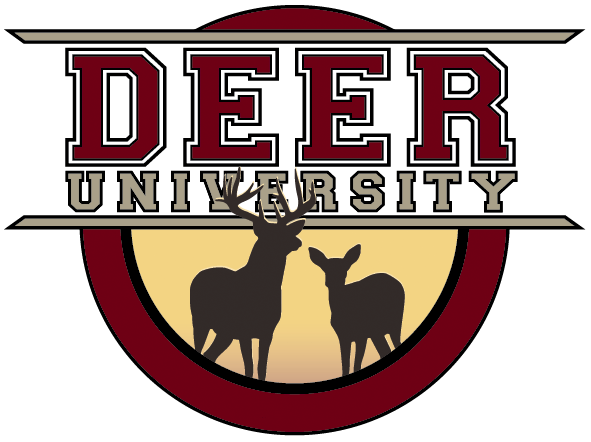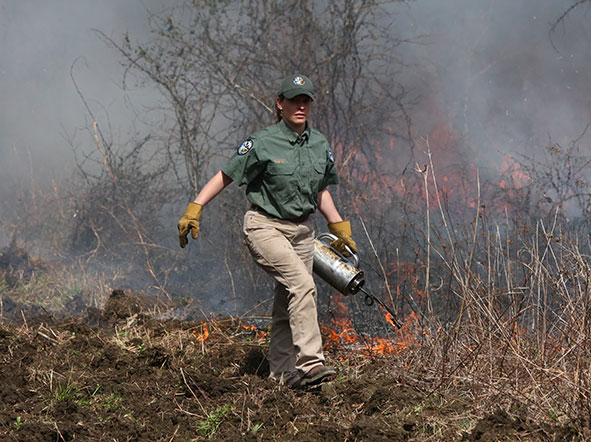Trophy Deer Management
The primary objective of this strategy is maximizing antler quality. The deer herd is kept below the habitat's carrying capacity to ensure an abundance of food resources which will maximize per capita fawn production and mature buck antler size. The adult sex ratio is managed close to 1:1 and buck age structure is older (up to 50% of the bucks are 5.5 years old). Bucks with trophy antler potential are never harvested before 5.5 years of age, which can be problematic for many hunters and not conducive to many land-management scenarios. This often results in constructing a deer-proof fence to enable the landowner to manage for an old buck age structure. Habitat management is commonly employed to maximize natural food production and supplemental plantings (food plots) and supplemental feed (pelleted protein ration) are the norm. A selective buck harvest program is often used to remove bucks with below average antler size. Overall, this management strategy is designed to manage a herd with characteristics that will produce the greatest number of mature bucks and food resources for those bucks.
Another form of deer management that is becoming increasingly more popular and necessary is called Urban Deer Management. In this case deer herds are managed in the context of a residential area, whether it is urban (city) or suburban (neighborhood). Many times residential homeowners are excited to see wildlife, such as deer, in the backyard, but over time the novelty declines when property damage occurs. Homeowners that once relished the sight of a deer in the backyard become the biggest proponents for management to reduce their numbers. This is especially so when deer numbers become so great that deer-vehicle collisions commonly occur and endanger humans. The Quality Deer Management Association's program entitled "Living with White-tailed Deer" provides a thorough review of issues surrounding abundant deer populations in urban and suburban environments. You can learn more about this program at www.QDMA.com.
When deciding upon a deer management strategy for your property, don't forget to factor in People Management. This alone will influence your success or failure. Each management strategy listed above comes with tradeoffs, thus all people involved in a deer management endeavor must have similar goals, or problems will quickly develop. For example, many people are interested in quality or trophy management, but soon realize that a tremendous amount of hunter restraint is involved. That is, hunters must learn to pass younger bucks to achieve an older-buck age structure. For some hunters this is not a problem—they know what they want and they are willing to sacrifice in the short-term to achieve their long-term goal. Other hunters just are not willing to limit the harvest of bucks in the short-term, or they want to harvest a number of bucks that is not compatible with management goals. In cases like this it would be much better for hunters with a different management strategy to hunt somewhere else, or many years of bitter conflict can result.



